How To Get My Kindergartener To Learn Sight Words
It'southward important for beginning readers to develop a bank of sight words to support their early reading. If you're wondering how to teach sight words to kindergarteners and preschoolers, information technology's a task that can be done, but information technology will definitely take time. Read on for some great tips to get them started early.
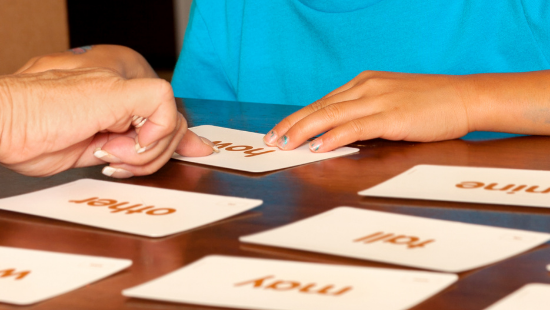
What are Sight Words?
Sight words are as well referred to as "high frequency words" considering they are words that appear well-nigh ofttimes in texts.
Some examples of early sight words are "the," "I," "a," and "am." As children progress with their reading, they can begin to work towards recognizing longer sight words, such equally "they," "said," "where," and "have."
The goal is for children to recognize sight words instantly, without needing to devote much effort to sounding them out. This frees upwardly their efforts for words that require more strategies to solve.
For example, a book written for a beginning reader may include the sentence starter, "I am" on each page, with endings such as "pond" or "running" completing each sentence. Children with a well-adult depository financial institution of sight words can instantly and effortlessly recognize the words "I" and "am."
This allows them to focus their discussion-solving strategies on the last give-and-take in the sentence. They may utilise strategies such equally making the starting time sound and looking at the picture cue.
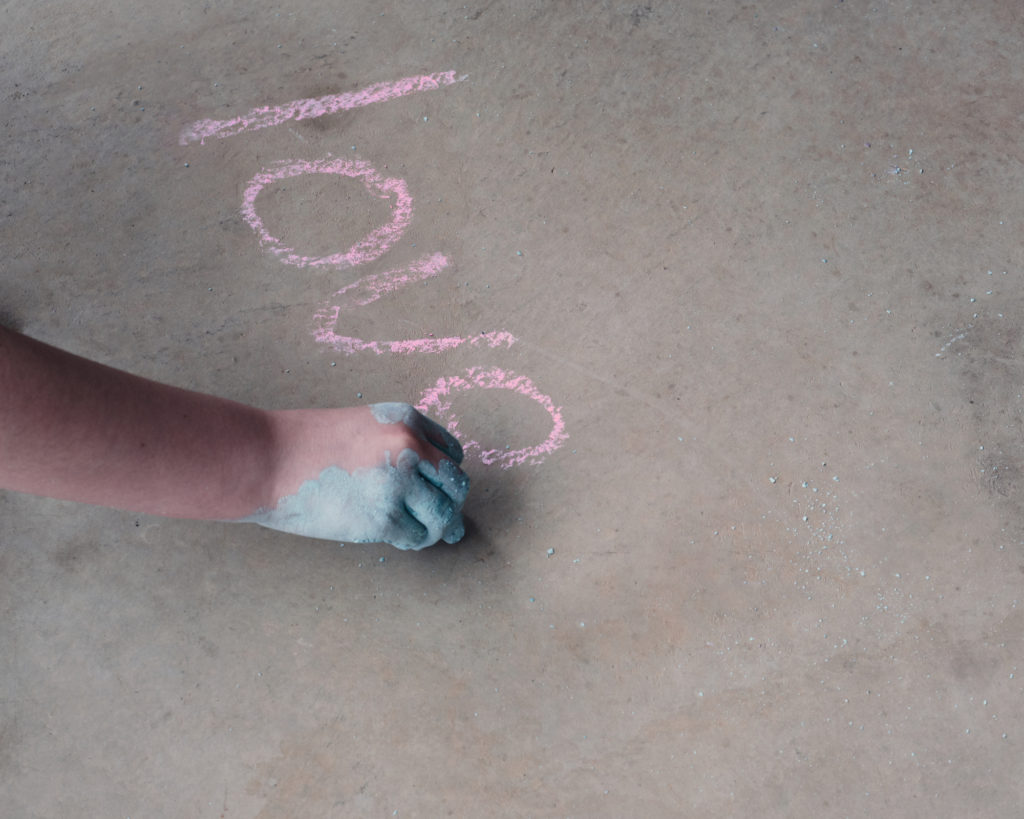
When to Teach Children Sight Words
Non every child is ready for sight words at the same time. Like to talking and walking, learning sight words is a developmental stage that children begin at dissimilar ages. Usually, information technology should not exist before about 5 years of age.
Before learning sight words, make sure the child developed pre-reading behavior. Once your child begins showing an involvement in letters and words, it indicates that a child is growing closer to reading.
Children do not require to recognize every letter earlier they begin learning sight words. A few letters and their sounds will let them go started with pre-primer sight words.
How to Teach Sight Words
It can take time for children to acquire sight words depending on their age, motivation, and cerebral skills. Even so, teaching sight words with the right strategies can assist any child to amend apace.
If yous're looking for how to teach sight words to kindergarteners or preschoolers, here are some great tips and strategies to do then.
1. Beginning with a Small-scale Listing of Words
It is easy to find lists of sight words to begin introducing to young children. Withal, information technology is important that educators do non overwhelm beginning readers with long lists of words to learn.Start with one or two words that you would similar to focus on. Requite children many opportunities to do these words and solidify their learning, before introducing more than words.
2. Make it Motivating
Children can exist motivated to larn sight words that hold personal significance to them. For example, a child may savour learning how to read the discussion "mom" or "dad."
Also, achieving quick success with sight words tin can motivate children to go on reading. Learning sight words like "I" and "a" may be easier than other words and give children an instant heave in their reading conviction.
3. Don't Innovate Visually Similar Words Together
Proceed in mind that children who are learning to read may find visually similar words disruptive. For example, it is not uncommon for get-go readers to mix up the words "the" and "here."
To cut back on the confusion, exercise not innovate visually similar words at the same time. Too, make certain that children accept a solid call back of the start word before introducing the second.
4. Practice Makes Perfect
As yous introduce new sight words, it is very beneficial to continue revisiting previously learned words. Even if they seem to have mastered a word, once yous introduce new words, they may forget what was previously learned.
Proceed to go dorsum and reteach or quiz your children on previously learned words to make sure that they withal remember them.
Worksheets can provide children with a variety of ways to review their growing bank of sight words. Coloring, matching, writing, and reading activities all assistance to solidify their sight discussion recognition.
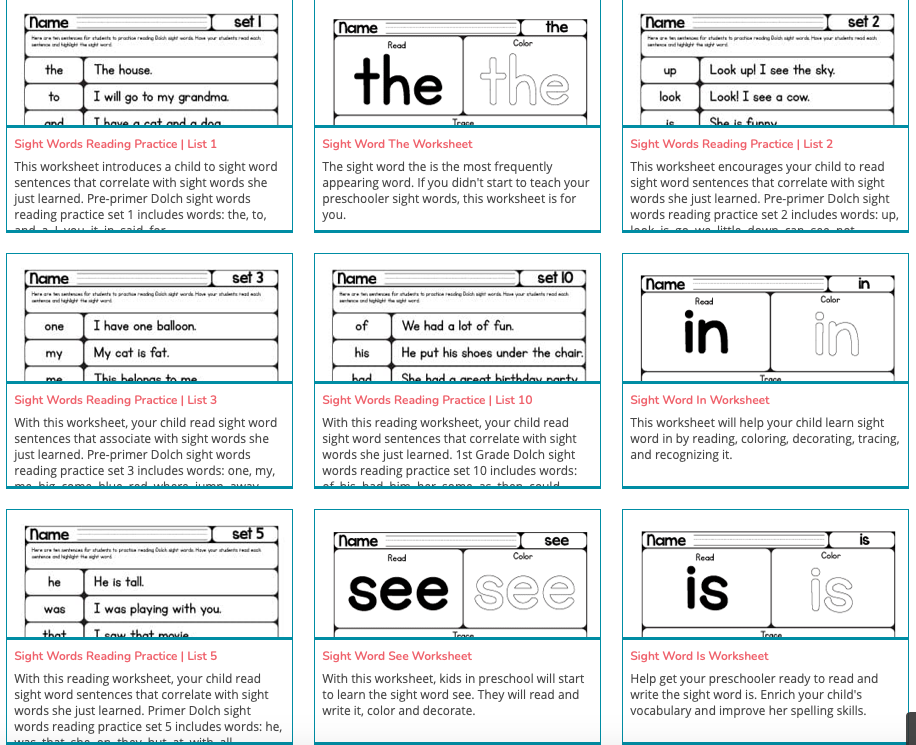
v. Use Books for Carry Over
A key component of learning sight words is to recognize them in context. Some children may be able to identify a sight word inside a list of words or on flash cards, but when information technology comes up in a book, they take trouble.
Children should be exposed to a variety of books at their current reading level that include sight words you accept been practicing. Choosing "just correct" books is of import.
Asking children to read books that are far as well hard can create frustration. To learn new words, do word-solving strategies, and sight word recognition, children need feel reading books at their instructional level – not too difficult, and not as well easy.

As you introduce sight words, pair them with books that are filled with the words you're focusing on. In that location are many texts written specifically for offset readers that utilize patterns and repetition to teach sight words.
The goal is to provide children with lots of exposure to the new words and to practice and so in a context where they can achieve success.
Beginning readers should read the same book more than one time, providing them with more than opportunities for practice and to develop confidence in their reading.
6. Pair Reading and Writing with Sight Words
Some other great strategy for how to teach sight words is to accept advantage of the human relationship between reading and writing. When children acquire how to write a give-and-take, they can typically read it as well.
Every bit you're instruction sight words and incorporating the use of levelled texts, consider ways to involve writing as well. One way is to employ a sentence stem from a book children have merely read.
Using the earlier example of a patterned text that begins each page with "I am," children could write their own "I am" sentence after reading the book. This provides them with practice writing two sight words.
Letting them cull their own ending for the sentence allows them to personalize their writing. Some children may wish to get a step farther than writing ane sentence and tin create their own "I am" book.
vii. Use Sensory Items For Writing Sight Words
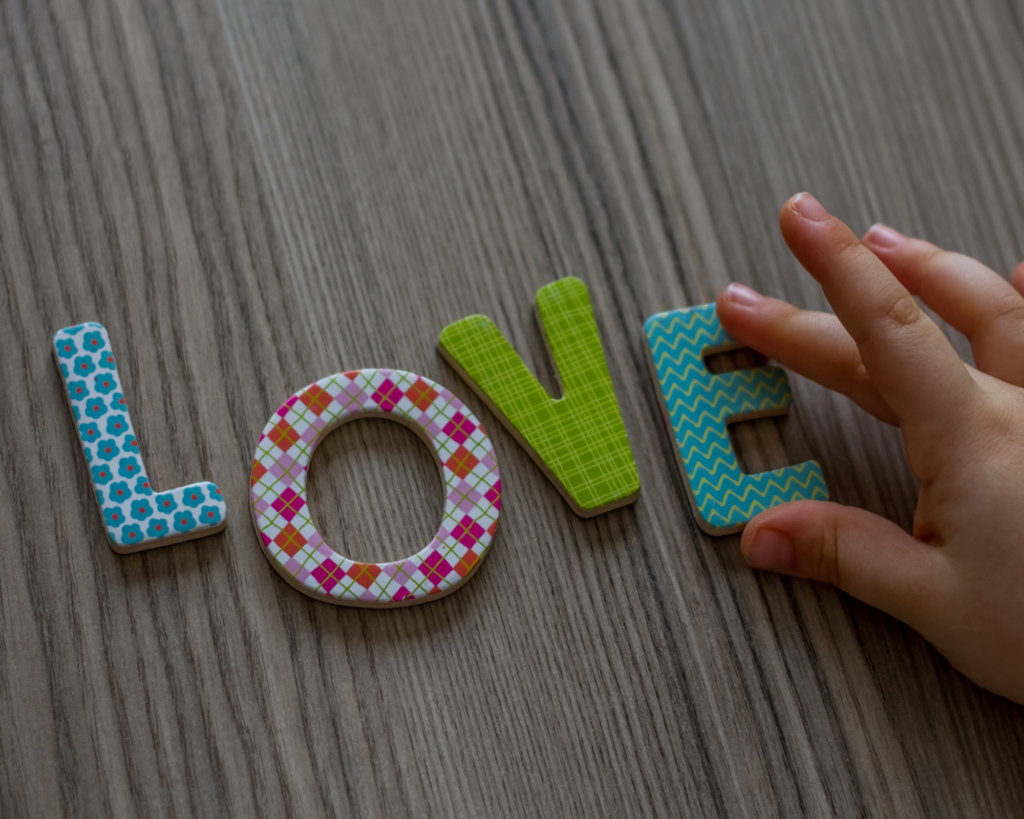
Preschoolers and kindergarteners may bask exploring different modalities to write words. Have them experiment with chalk, whiteboard markers, or pastels.
They can also practice writing their words in common salt trays, shaving cream, or sand. In add-on to writing sight words, children can build the words using materials like magnetic messages, letter tiles, or stamps.
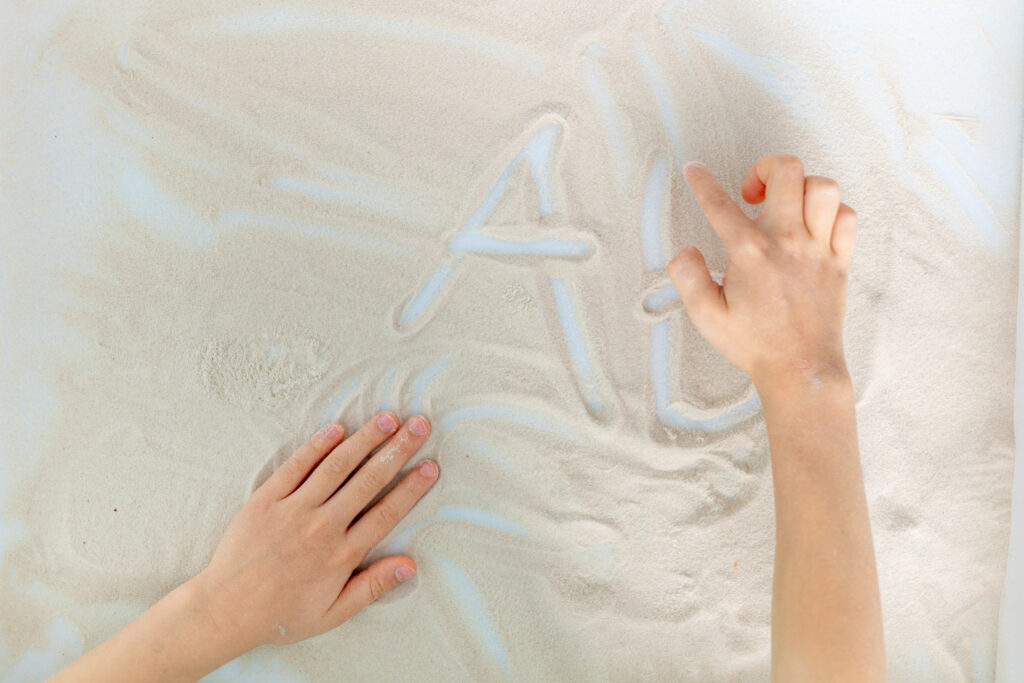
8. Use Visual Cues (Word Wall)
A great tool to aid children call up how to write sight words is a discussion wall. This is a visual display of words they have been introduced to.
Word walls can be put upwardly on a wall or bulletin lath or can exist a small-scale, personal chart kept at a child's table or desk. Information technology's important to make sure that words are displayed clearly, with the letters formed correctly. Commencement readers and writers can find fancy print confusing.
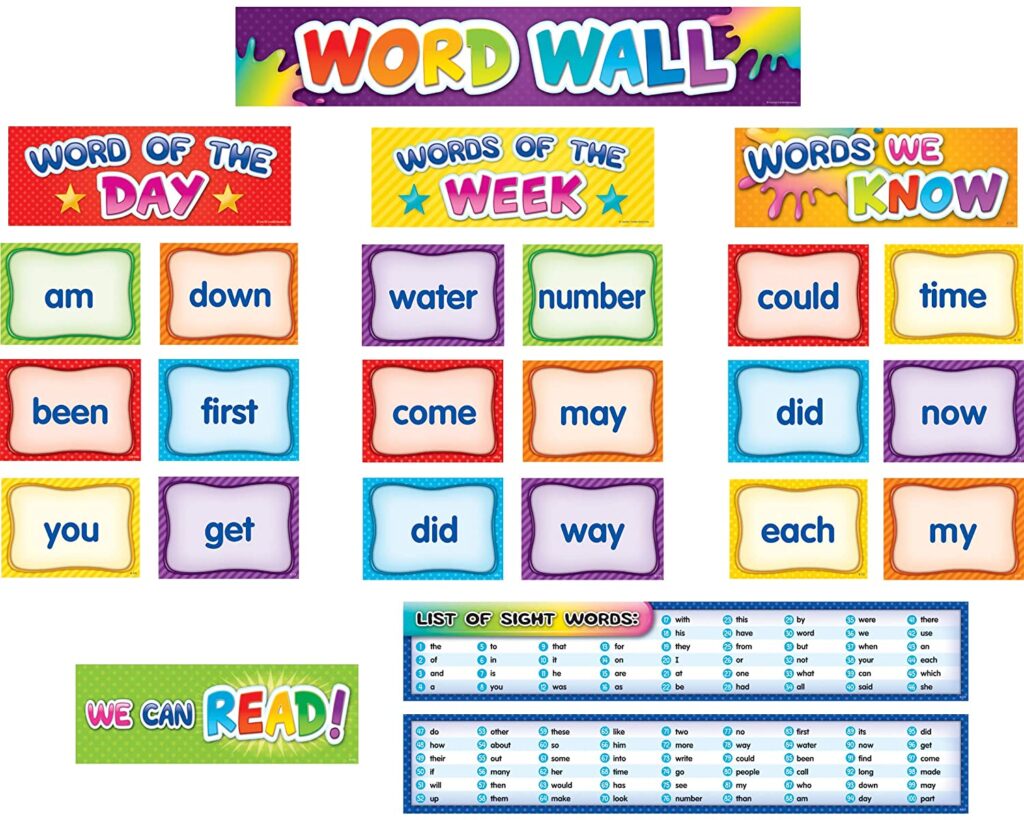
Give-and-take walls are also a slap-up way to keep track of which sight words yous have introduced. They too provide another way for children to review their words.
9. Sight Word Games
After introducing a new word, we don't desire to carelessness it before a child has had adequate opportunities to solidify its recall. Sight word games are a great way to teach sight words by reviewing and adding new words.
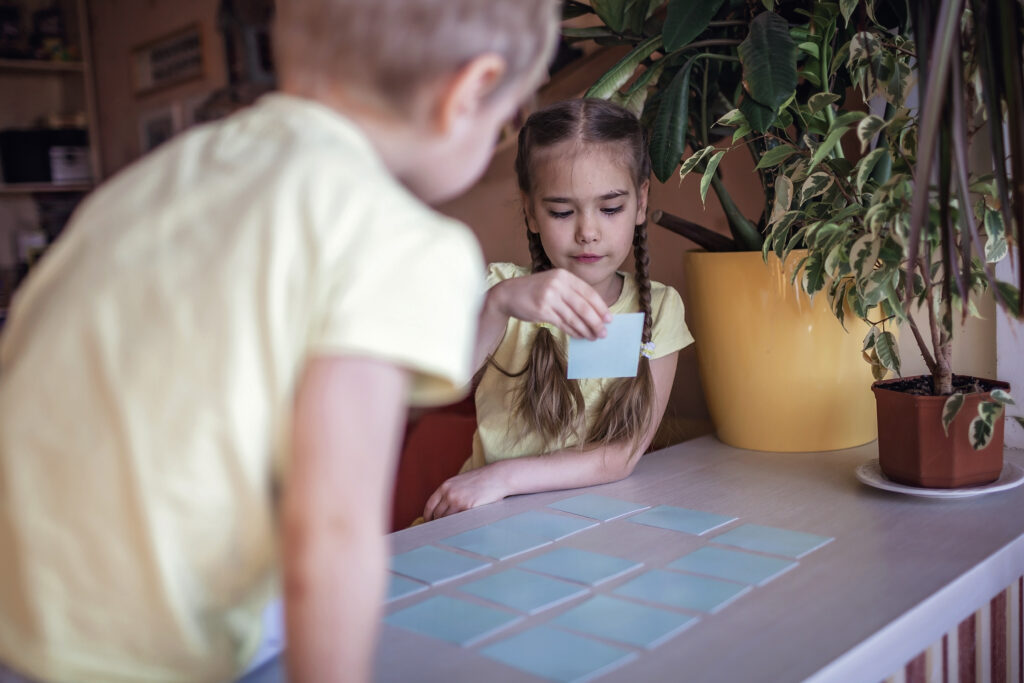
I case of a sight word game is Retentiveness. Each word needs to be written on two flashcards. All the flashcards are turned over, face down.
Each role player takes turns choosing 2 cards. If they friction match, the player keeps the cards and gets another plough. If they don't match, the role player flips the cards dorsum over and the next player has a turn.
The game ends one time all the cards have been matched. The winner is the player with the most matches.
Another simple sight word game is Zoom. A sight word is written on each wink card. The aforementioned discussion tin be written on a couple flashcards if you like.
The word "zoom" is printed on several flashcards. Players have turns choosing a card from the deck. If they choose a sight word, they read the word then place the card in their own pile.
If they choose a "zoom" carte du jour, they get to steal everyone'south cards. Once all the cards have been chosen, the histrion with the biggest pile wins.
Sight Word Bingo is another style for children to review their sight words. Bingo cards made for dry out erase markers tin be reused only paper and pencil also works.
Each player needs a bingo card that has a different sight discussion in each box. Y'all also demand a deck of flashcards with each word written on a menu.
One person chooses a card and reads the sight give-and-take. The players look at their bingo bill of fare to come across if they have the discussion, If so, they check it off.
Cards continue to be chosen until a player gets "bingo." This may be one line of words, words that create an "10" on the card, words in the four corners of the card, or fifty-fifty every word on the card.
Introducing children to sight words is an essential part of educational activity them to read. Watching their depository financial institution of known words develop is exciting to see! As they accrue more than words that they can instantly recognize, their confidence in both reading and writing will grow.
Now that you know how to teach sight words to kindergarteners and preschoolers, y'all can go your children and students learning and reading in no fourth dimension! Be consistent with the to a higher place strategies and they'll love learning to read and write.
Writer Bio
Alesia is a founder of PrimaryLearning.org, an educational website that helps unproblematic school teachers and homeschool parents with easily-on worksheets, activities and thoughtful articles.
Related posts:
How To Get My Kindergartener To Learn Sight Words,
Source: https://www.teachinglittles.com/tips-to-teach-sight-words-to-kindergarteners/
Posted by: lopezbeturped1953.blogspot.com


0 Response to "How To Get My Kindergartener To Learn Sight Words"
Post a Comment